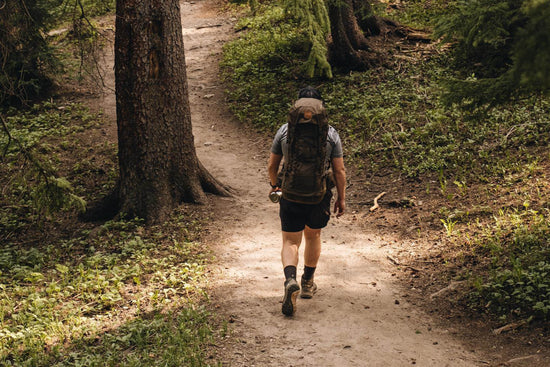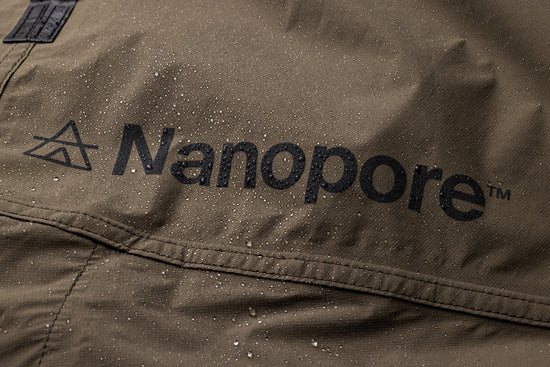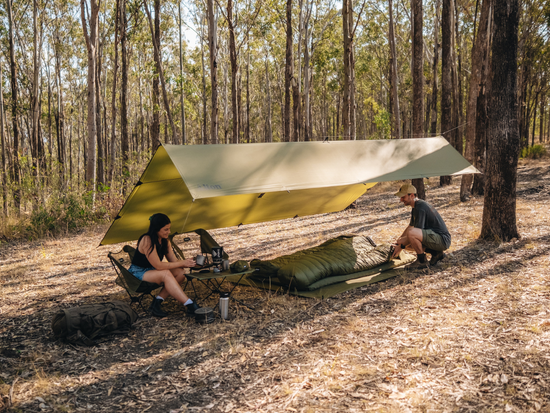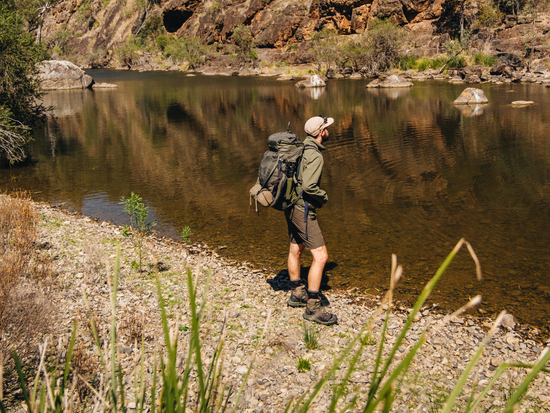Tarp camping offers an enticing blend of simplicity, versatility, and connection with nature. Whether you're a serious hiker on a mission to reduce your pack weight, a bushcrafter honing your survival skills, or a casual camper who is keen to try something new, tarp camping is worth considering.
However, like any shelter option, tarp camping has its drawbacks. In this blog, we’ll weigh up the pros and cons so that you can decide whether tarp camping is right for you.

The Pros of Tarp Camping
1. You will save weight and space in your pack.
Tarps provide top-notch protection from the elements at a fraction of the weight of other shelter options thanks to their simple, single-sheet design. This makes them the first choice of hikers, bikepackers and pack-rafters who want to reduce the amount of weight they have to carry over long-distances.
2. You can adapt your camping tarp shelter to the conditions.
The ability to customise your shelter setup to suit the specific location and conditions you are camping in is one of the most practical advantages of tarp camping, but it is also one of the most enjoyable. There is something deeply satisfying about knowing that you put the effort into creating the ‘perfect’ tarp shelter.
3. You can use a camping tarp in so many ways.
Camping tarps are incredibly versatile, with a huge array of potential functions beyond just creating shelter. They can be used alone, with a hammock or over a tent, and can act as a cooking shelter, wind-break, water-catchment, sunshade, ground-sheet and more.
4. You will learn new skills and gain experience in the outdoors.
Camping tarps can help you develop valuable outdoor skills, including knot-tying, campsite selection, weather reading and more. With a tarp, you can think outside the box – or should we say, outside the tent.
5. You can rely on a camping tarp to be incredibly durable.
A camping tarp made from high-quality materials such as ripstop nylon or silicone coated nylon can handle just about anything the wild throws at it. They are built to be resistant to damage from abrasion, punctures and UV, making them the perfect shelter option for unforgiving environments.
6. You can embrace your inner adventurer.
One unique benefit of camping tarps that often gets overlooked is the element of fun they bring to your adventures. Camping tarps challenge your skills, immerse you in nature, and allow you to get creative on every camping adventure.

The Cons of Tarp Camping
1. You might feel exposed to bugs, animals and nosy neighbours.
Without set walls and a floor, a camping tarp is more open to the world around you. Although the right gear and setup configuration make a big difference, some people may find they feel uncomfortably exposed in a tarp.
2. You don’t have as much protection in inclement weather.
Camping tarps are more open by design. This open, adaptable configuration of tarps is a big part of the appeal, but it isn’t always ideal. In stormy, wet or snowy conditions with high wind, a tarp might not be your first choice of shelter.
3. You have to select your campsites with care.
Tarp camping can give you more flexibility about where you can camp, but that doesn’t mean you can use it everywhere. Tarps are not freestanding, so you’ll have to secure it to anchors such as trees or stake it into the ground in order to create a shelter. If the ground is too hard, soft or rocky for stakes, or if there are no trees or other anchors to secure your camping tarp to, then you might be in a pickle.
4. You will need to learn the ropes of camping tarp setup.
When you first start tarp camping, you’ll need to devote some time and energy to learning a few setup configurations and the basic knot tying skills that go with them. Plus, you’ll need to understand how factors like terrain, weather and wind direction will impact your shelter, and then select the best tarp configuration to suit the conditions. Unfortunately, not everyone will enjoy this learning curve.
5. You may have to invest in a bunch of other outdoor gear.
Tarps are known for being an affordable alternative to tents, and while this is true, it is only part of the story. In some cases, you will need extra gear such as a groundsheet, bug-net or bivvy, to make sure you are properly equipped.
6. Sometimes, a camping tarp just won’t cut it.
Look, no shelter is perfect all the time, and camping tarps are no exception. Sure, some people may use camping tarps as a shelter year around, but that doesn’t mean that you have to, too.

Is tarp camping right for you?
Well, we might be a little biassed, but we think a camping tarp can be an asset to any adventure. An ultralight tarp can be incredibly useful, no matter what your exact shelter setup is. With a camping tarp in your pack, you can go further with less, master new wilderness skills and adapt your shelter to the conditions.









